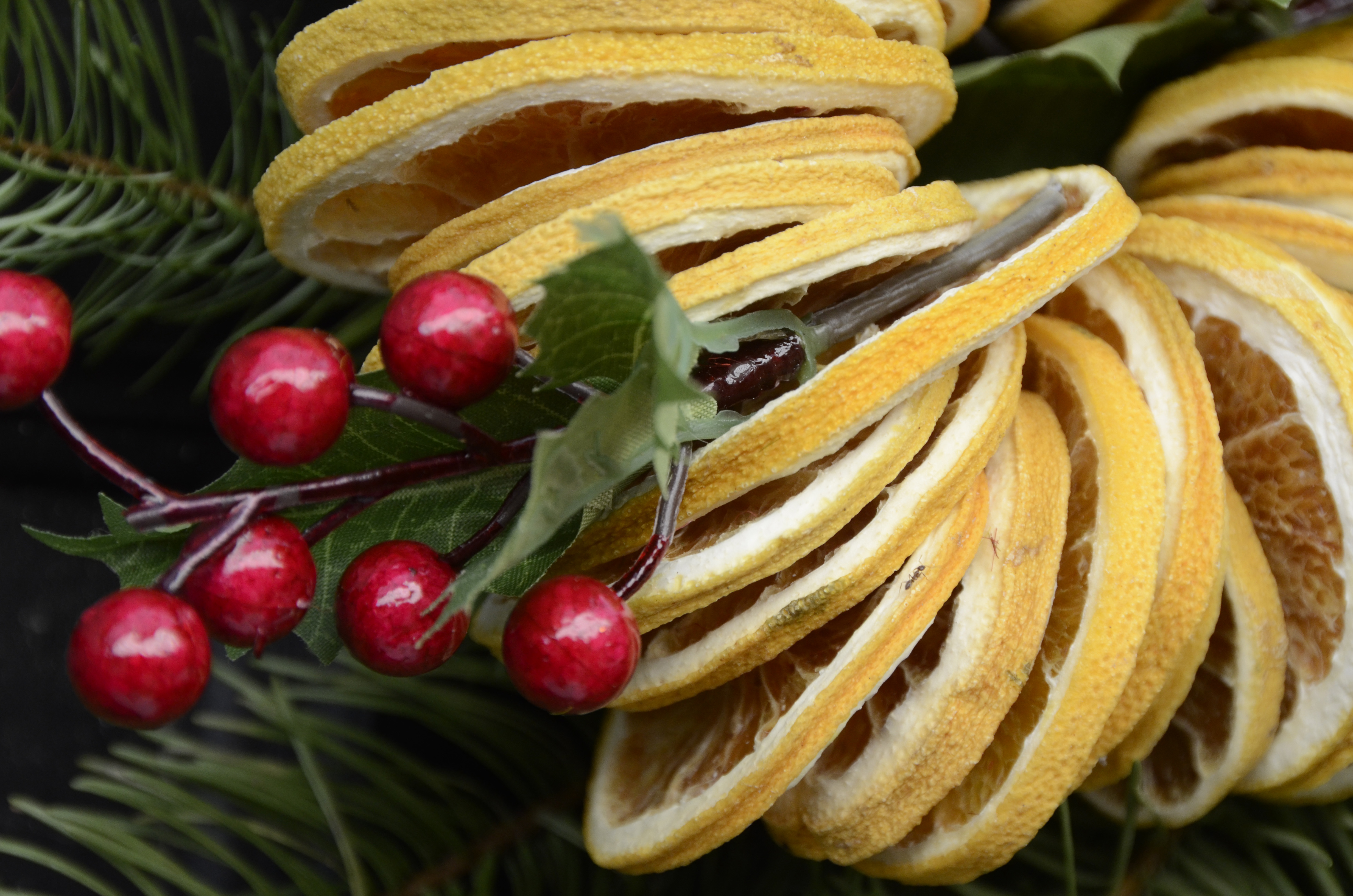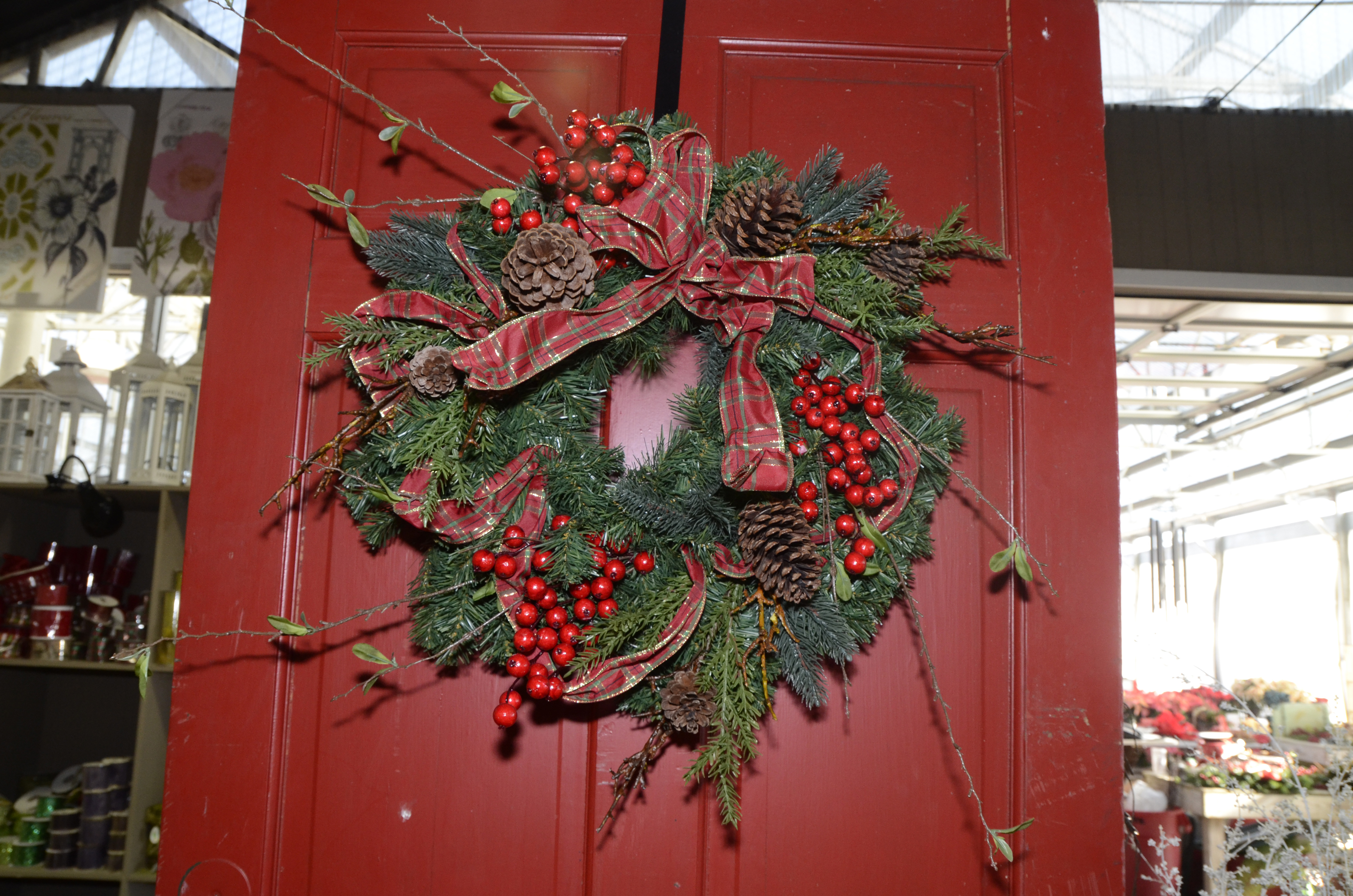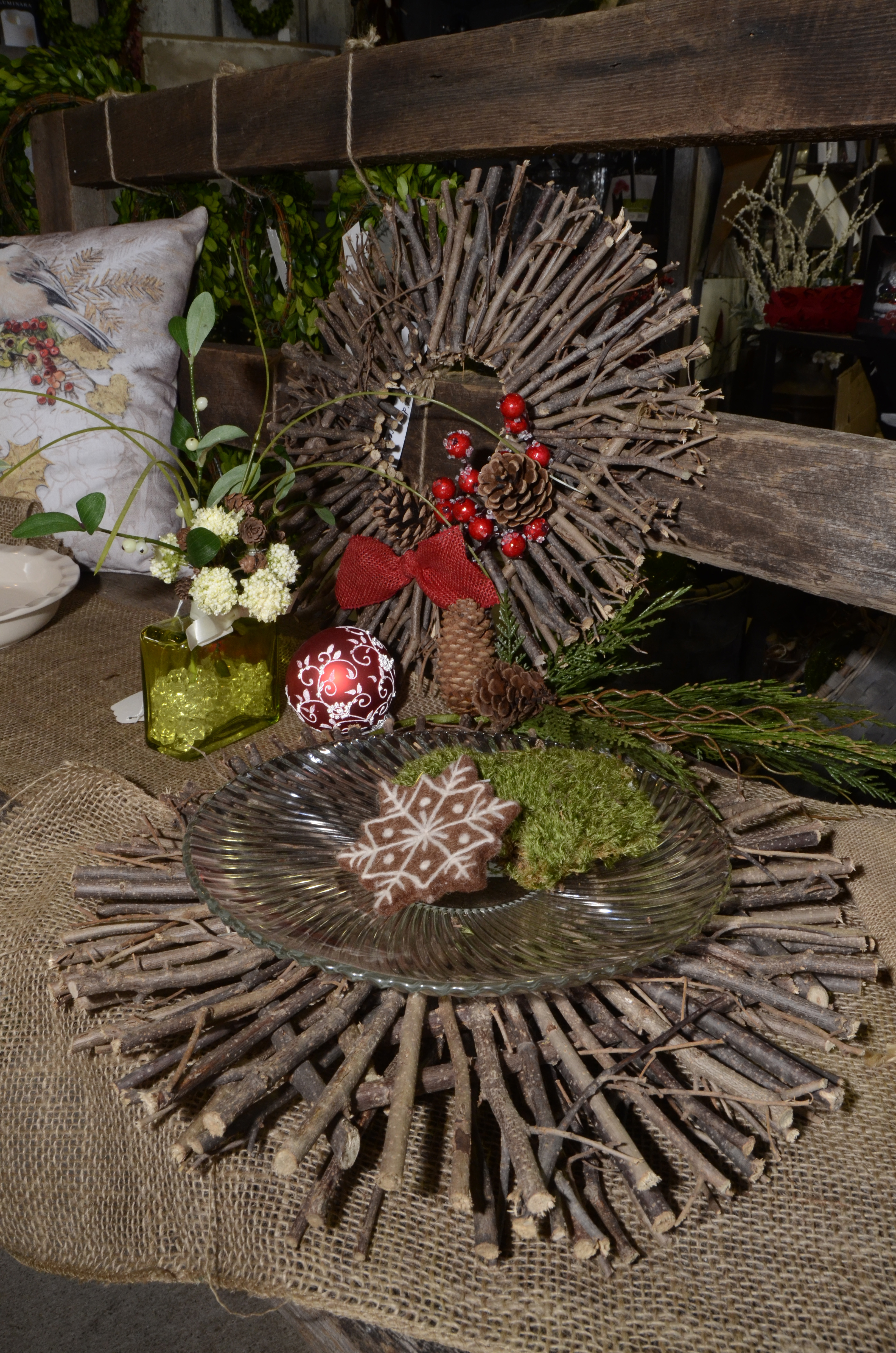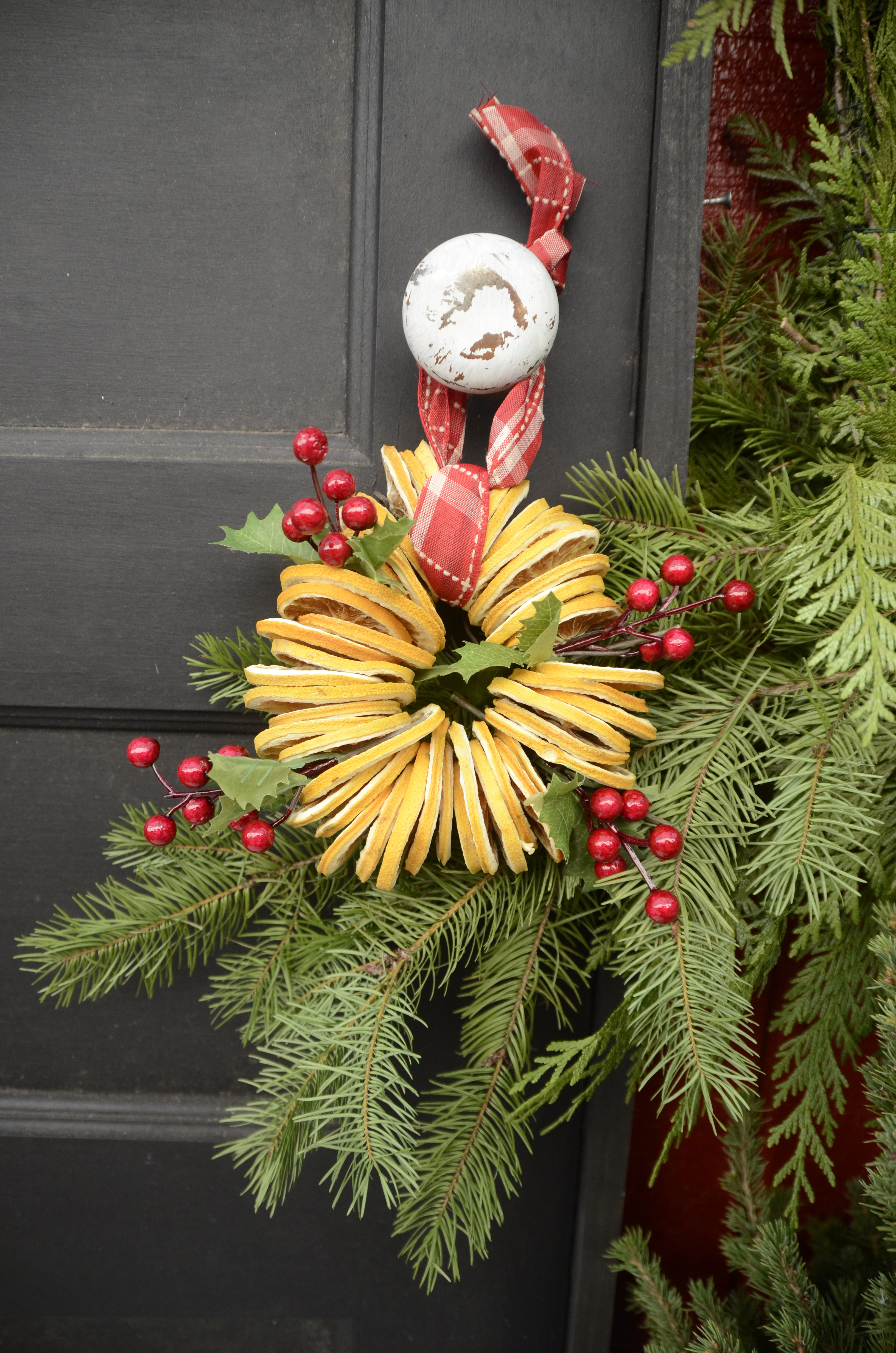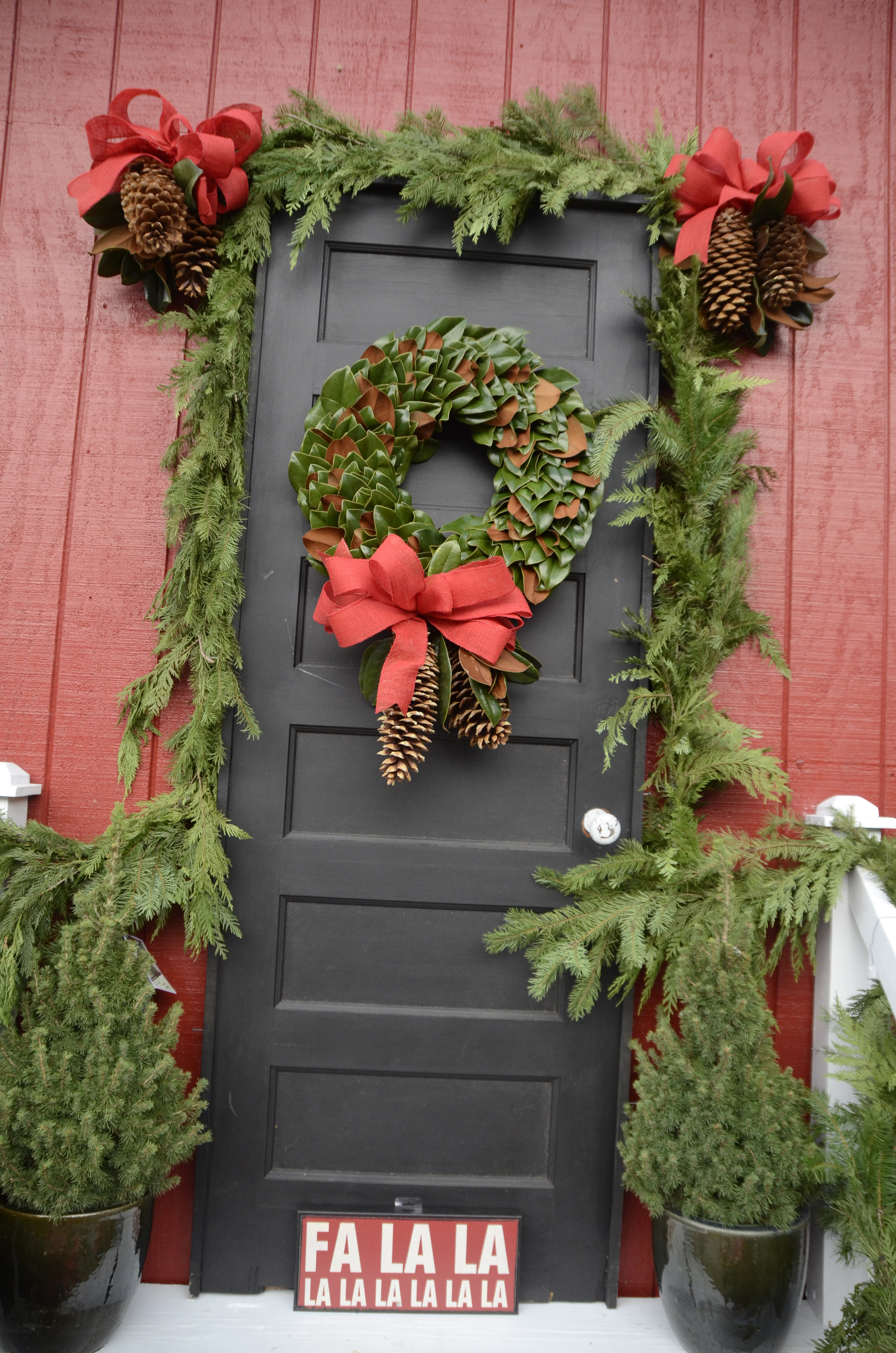Holiday GreensFor indoor holiday decorations such as garland, swags and wreaths, choose pine, fir and cedar. These cuttings dry out slower than other greenery.The best way to ensure your greenery is fresh is to cut it yourself. If you are buying, give pine needles the Christmas tree test: Bend branches or tips back. If they are brown or they break/drop needles, don't buy it.Natural greens can last up to a month, but it's best to hang them one or two weeks before Christmas.Buy or cut greenery as close as possible to when you will use it. After bringing branches home, recut their ends, slightly flatten the ends with a hammer so they will absorb more water, them soak them overnight in a bathtub filled with water.Use cooler LED Christmas lights on garlands.Hang fresh greenery away from vents, sunny windows and, of course, the fireplace. Don't swag a mantel in fresh garland if you plan to use that fireplace.Don't use greenery with poisonous berries if you have children or pets. These include holly, yew, ivy, Jerusalem cherry, bittersweet, crown of thorns and mistletoe.Source: HGTV.com
Artificial greenery has become so much the norm in holiday decorating, the occasional encounter with the pungent scent of pine is enough to cause an immediate flashback to Christmases past.
And sometimes that woodsy aroma is even wafting from a candle or an air freshener.
Although the buzzwords for holiday decorating are "prefabricated" and "prelit," there are still homeowners who deck their halls with boughs of holly, swag their banisters with fresh pine and hang live mistletoe kissing balls over the doorways. It's easy to forget that such picturesque, Dickensian scenes occurred before the invention of central heat, when indoor greens would last longer. But by remembering a few basic tips, it is still possible to re-create that natural look for a short time, say local retailers.
"The natural look is really popular right now -- pine cones are back in; magnolia leaves are big, even cotton bolls," says Dana Easley, office manager and a designer at Southern Accessories in Dalton, Ga. "Natural greenery gives a welcoming look to anything on the door, that accents the mailbox or lamp post."
The Barn Nursery in Chattanooga has designs featuring four main trends in natural greens:
- Red and Green: Bright-red holly berries against a pine wreath are the epitome of Christmas' traditional red-and-green-decor. Linda Pettit, Barn Nursery designer, suggests layering artificial berries with real greens for the scent of the season without the mess of berries dropping and being tracked into the entryway.
- Morning Frost: A frosty design that gives the illusion of winter's first cold snap. It's a snowy look that's not as heavy as old-school "flocking" and combines natural greens, silver birch twigs, pods and white lights with burlap ribbon, even burlap flowers.
- Nature's Bounty: Pines cones are back. Once a staple of the country decor, pine-cone wreaths are now used to add texture to woodland decorations or their metal frames can complement the modern industrial decor. Also, look for strands of dried apple or orange slices strung into rings to hang on door handles or door knockers, or pieced singly or in clusters onto wreaths or garlands.
- Winter Forest: This look incorporates sticks, twigs, pods, owls, cardinals and evergreens. Already-popular birch branches are even stronger this season. You'll find these stripped-down pieces of wood inserted as branches into vases or cut into mini, 4-inch "logs" and glued into arrangements.
When it comes to going au naturel, however, homeowners should keep in mind that natural greens only survive indoors an average of two weeks, four at the most.
Pettit says Teddy Bear Magnolia and Little Gem Magnolia are the two best choices in magnolias for decorating. Both have smaller leaves that look equally good used in containers as they do in wreaths or garlands. She suggests possibly mixing magnolia with boxwood.
"Boxwood holds up well and doesn't shed at all. Noble fir holds up best indoors; hemlock dries out faster," she advises. "If you are using natural greens on the door or inside, spritz them every couple of days with a little spray bottle to keep them moist. But if the greens are outside, rain and natural moisture should keep them good for a month."
Contact Susan Pierce at spierce@timesfreepress.com or 423-757-6284.

